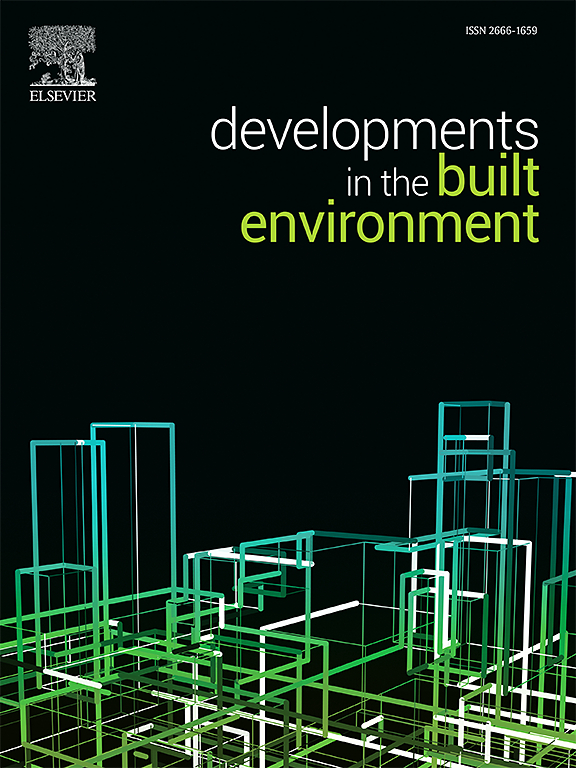High impact resistance with less material: a comparative study of Kagome truss and conventional rebar in concrete panels
IF 8.2
2区 工程技术
Q1 CONSTRUCTION & BUILDING TECHNOLOGY
引用次数: 0
Abstract
This study experimentally validated a three-dimensional Kagome truss as a highly efficient alternative to conventional rebar for enhancing the projectile impact resistance of concrete panels. In this experiment, three types of panels with identical dimensions were fabricated: conventional RC panel (CP-2), RC panel with increased rebar (CP-4), and Kagome truss reinforced concrete panel (CP-K). High-velocity projectile impact tests were conducted to analyze the failure patterns on the front and rear faces, penetration depth, mass loss ratio, and damaged area of each panel. The experimental results showed that the CP-K panel withstood a greater number of impacts before perforation compared to the CP-2 and CP-4 panels. Furthermore, the CP-K panel exhibited smaller front and rear failure zones, less penetration depth, and a lower mass loss ratio. Notably, despite using a lower weight of reinforcement than the CP-4 panel, the Kagome truss-reinforced CP-K panel demonstrated superior impact resistance, establishing its potential as a material-efficient alternative for protective structures.
用更少的材料提高抗冲击性:Kagome桁架与混凝土面板中常规钢筋的比较研究
本研究通过实验验证了三维Kagome桁架作为传统钢筋的高效替代品,可以提高混凝土板的抗抛射冲击能力。本试验共制作三种尺寸相同的面板:常规钢筋混凝土面板(CP-2)、加筋钢筋混凝土面板(CP-4)和Kagome桁架钢筋混凝土面板(CP-K)。通过高速弹丸冲击试验,分析了各板前后面破坏形态、侵彻深度、质量损失率和损伤面积。实验结果表明,与CP-2和CP-4面板相比,CP-K面板在射孔前承受了更多的冲击。此外,CP-K面板的前后破坏区域较小,穿透深度较小,质量损失率较低。值得注意的是,尽管使用的加固重量比CP-4板轻,但Kagome桁架加固CP-K板显示出卓越的抗冲击性,这奠定了其作为保护结构的材料节能型替代品的潜力。
本文章由计算机程序翻译,如有差异,请以英文原文为准。
求助全文
约1分钟内获得全文
求助全文
来源期刊

Developments in the Built Environment
Multiple-
CiteScore
7.40
自引率
1.20%
发文量
31
审稿时长
22 days
期刊介绍:
Developments in the Built Environment (DIBE) is a recently established peer-reviewed gold open access journal, ensuring that all accepted articles are permanently and freely accessible. Focused on civil engineering and the built environment, DIBE publishes original papers and short communications. Encompassing topics such as construction materials and building sustainability, the journal adopts a holistic approach with the aim of benefiting the community.
 求助内容:
求助内容: 应助结果提醒方式:
应助结果提醒方式:


